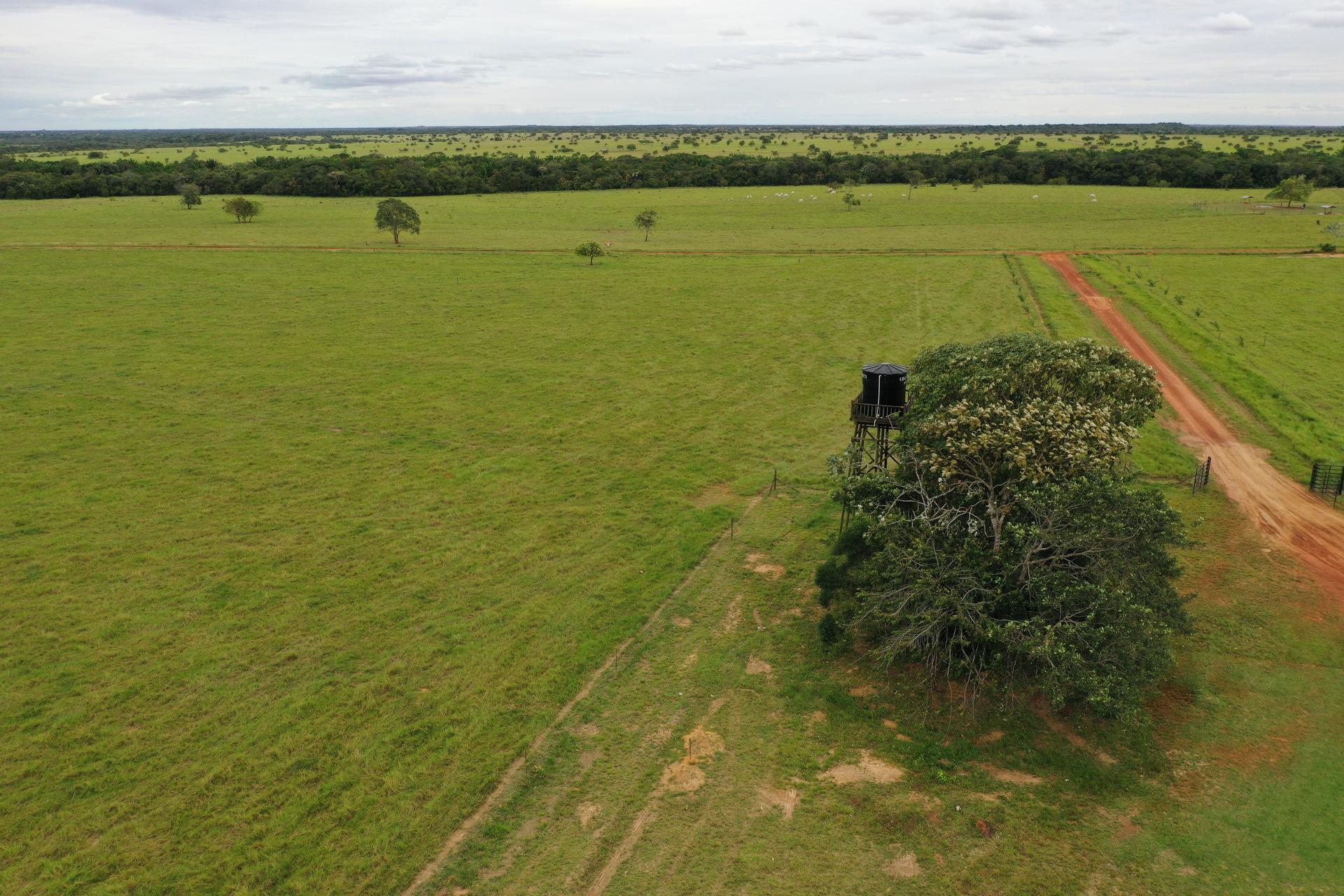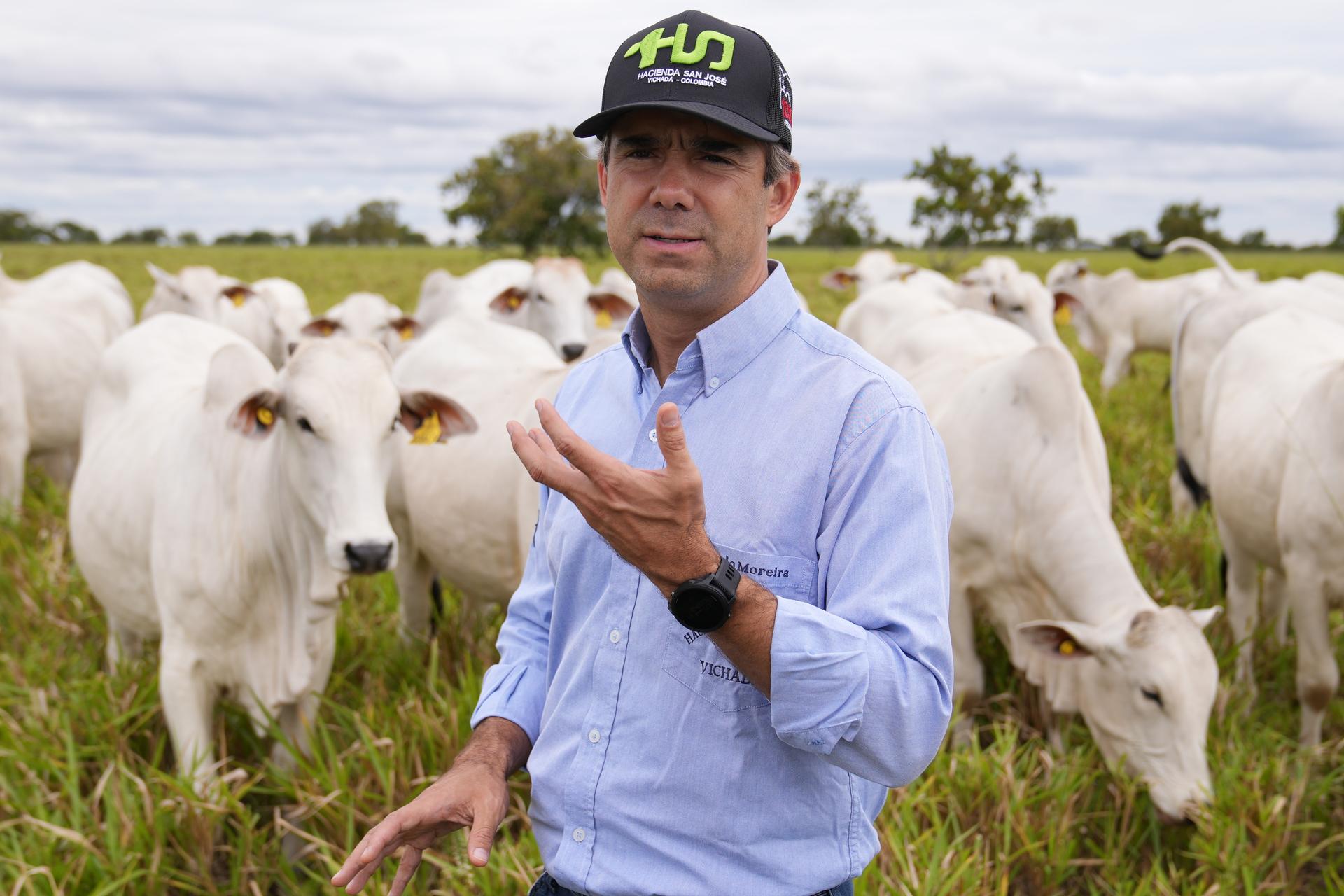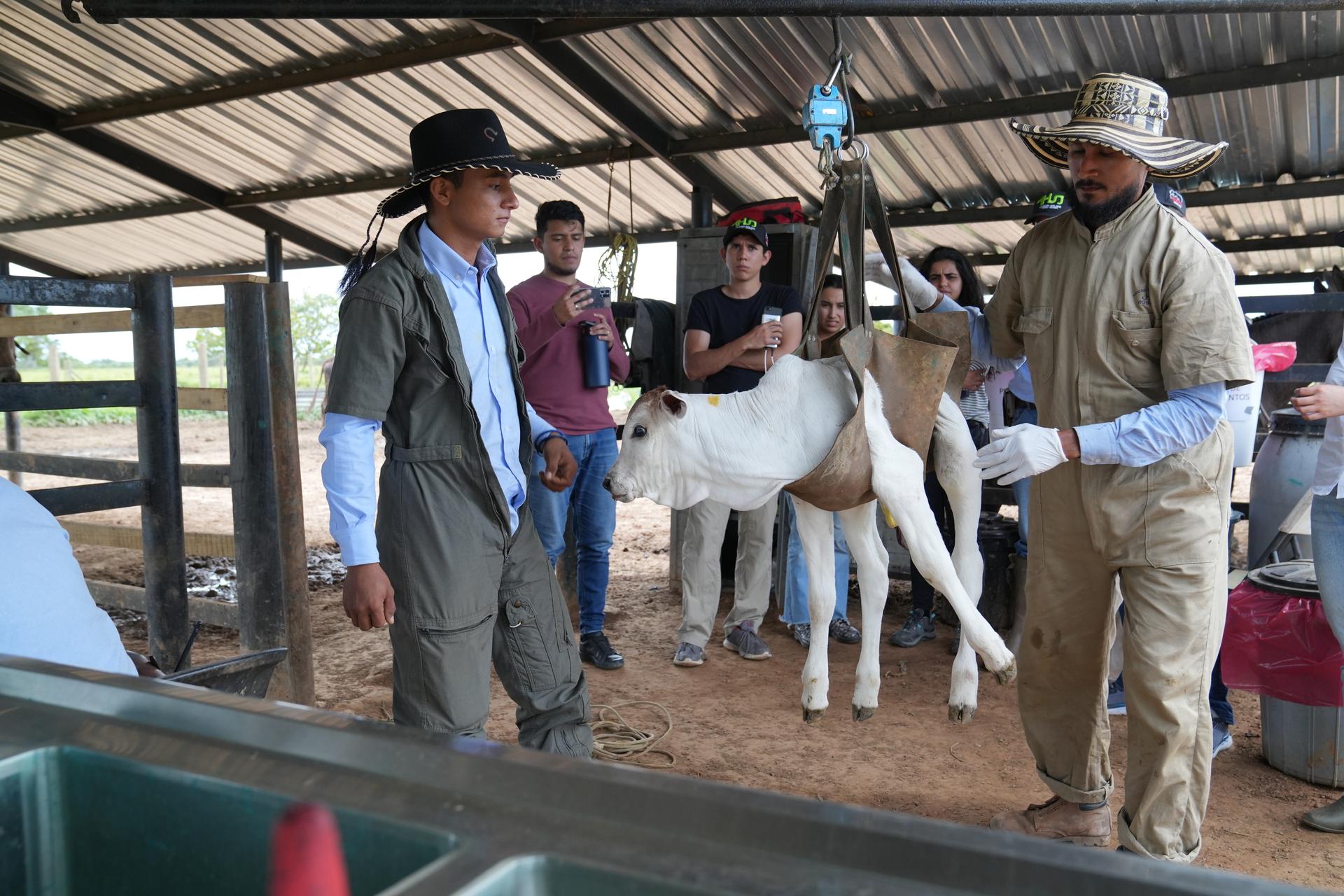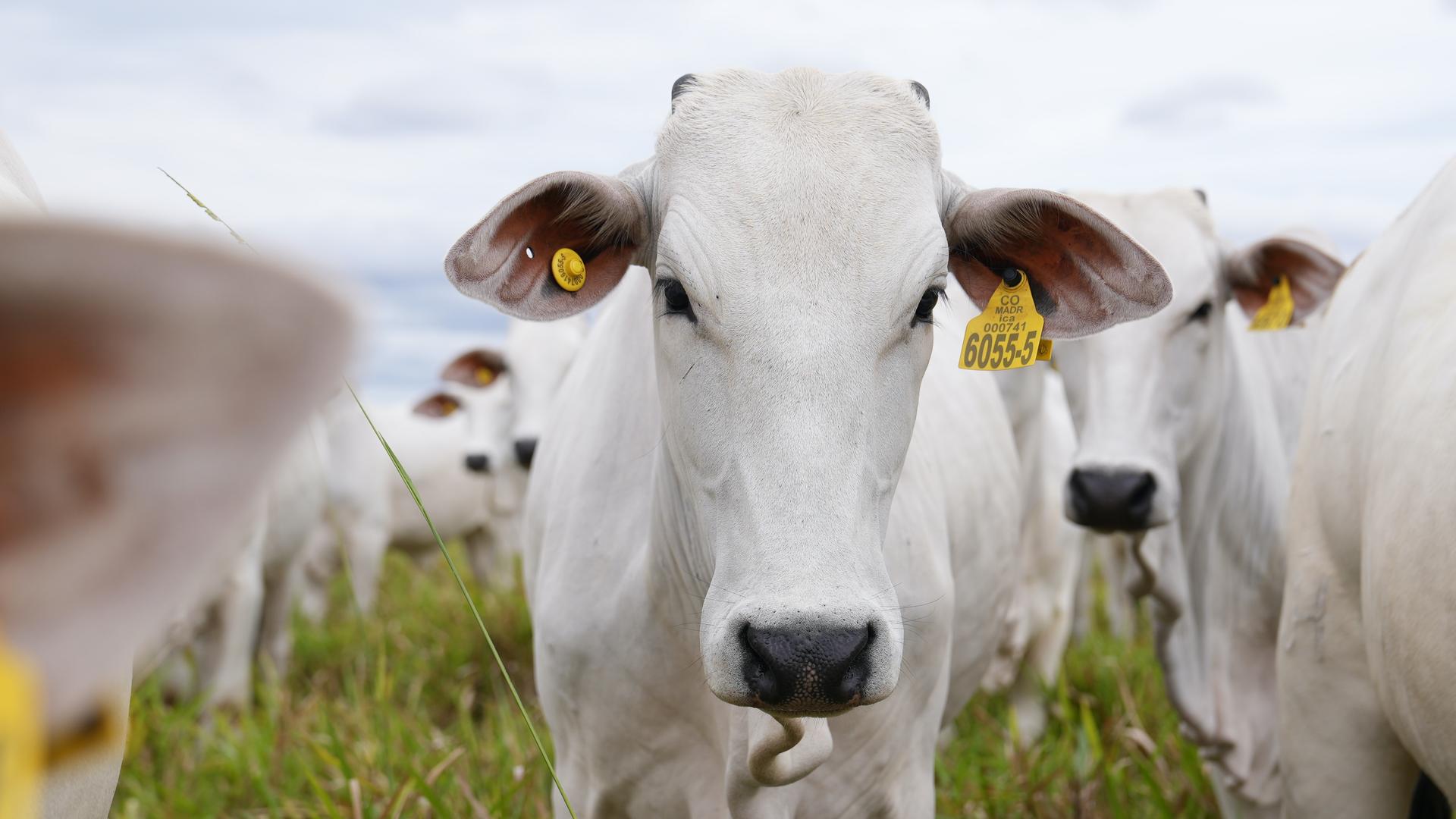To reduce its emissions, Colombian ranch experiments with a new variety of grass
The San Jose ranch is located on a remote stretch of Colombia’s eastern plains. It has its own runway for small aircraft — and 5,000 cows — which are fed with a special kind of grass called Koronivia.
This kind of pasture is more efficient at feeding cattle. And it’s also better for the environment, according to Jacobo Arango, a biologist from the International Center for Tropical Agriculture, which bred Koronivia at its seed bank, and is now testing how it performs at the 20,000-acre ranch.
“The key to this plant is that it’s able to grow deep root systems,” Arango said during a recent visit to Hacienda San Jose. “We have calculated that it is able to store 15% more carbon than the natural pasture that grows in this region.”

The beef industry is responsible for 9% of global greenhouse gas emissions, according to a recent study by the University of Illinois. And its practices are coming under greater scrutiny from customers and governments looking for ways to slow down global warming.
In the remote Colombian province of Vichada, which is mostly covered by savannah and small forests that grow along the region’s rivers, the San Jose ranch is trying to show that there are ways for cattle ranching to be more environmentally friendly — and still be profitable.
One of its most successful projects so far has been planting its fields with Koronivia. This kind of grass doesn’t just sequester more carbon from the atmosphere. A study published in November also found that it can capture and store large amounts of nitrogen after cows release it in their urine, slowing down emissions of nitrous oxide.
“We have calculated that there’s a 1 1/2- to 10-fold reduction in terms of nitrous oxide emissions,” Arango said.
Thanks to its use of Koronivia — and other improvements like using cattle that are ready for slaughter in less time — the San Jose Ranch currently soaks up more greenhouse gases than its cattle emit. And it also needs less space for its cows. This hacienda can feed 17 times more cattle per acre than its neighbors, according to Paolo Moreira, the ranch’s chief executive officer.
“In terms of emissions, it is true and always will be true that the animals emit gases,” like methane, which cows emit when they burp, he said. “But when you combine that with a system that is able to sequestrate more gases than what the animals are emitting, then, it becomes very interesting.”
Moreira is not the only one trying to reduce the beef industry’s environmental hoofprint.

In the United States, some ranchers are promoting a system known as regenerative grazing: Instead of planting a monocrop of grass for feed, cattle are rotated on fields of native species. This helps cows to be healthier while reducing emissions, said Allen Williams, a rancher and consultant from South Carolina.
“It sequesters a lot more carbon. Just like the prairies and the native grasslands once did,” he explained. “They were carbon sinks. So, we’re recreating the carbon sinks by recreating the diversity of plant species.”
In Colombia, Moreira and his business partner, a former banker, have raised millions of dollars to launch their eco-friendly ranch.
Buying and planting the Koronivia grass is more expensive than the traditional methods of cattle ranching used in places like Vichada province.
So, Moreira said the ranch will be profitable by selling its meat in the United States where customers are paying premium prices for grass-fed beef.
“You go to Whole Foods markets today, and you see cage-free, animal well-being, no use of preventive hormones,” he said. “What we are trying to do here is to put all those attributes into the meat that we produce.”
Currently, most cows in the US are grain-fed and spend the latter part of their lives in feedlots. But that’s changing as customers seek more natural alternatives.
Williams said that sales of grass-fed beef have “grown exponentially” in the US over the past two decades. According to his estimates, they jumped from $3 million in 2003 to $8 billion last year.

“People like the richness and robustness of the flavor profile that a grass-fed beef has, that a grain-fed beef does not,” Willliams said. “Most grain-fed beef in the US has sort of a bland flavor due to the finishing rations that they’re on. And you have to marinate it or add sauces to it to add more flavor.”
The San Jose ranch needs to boost production for its eco-friendly but costly business model to work. So, the company is looking for 200 investors to buy plots of land in Colombia’s eastern plains.
Moreira said the plan is for each ranch to sustain 900 cows that will be raised with Koronivia grass.
“I think Colombia has a jewel in its hands,” Moreira said. “There’s this huge area that is very appropriate for cattle without the need to cut trees.”
